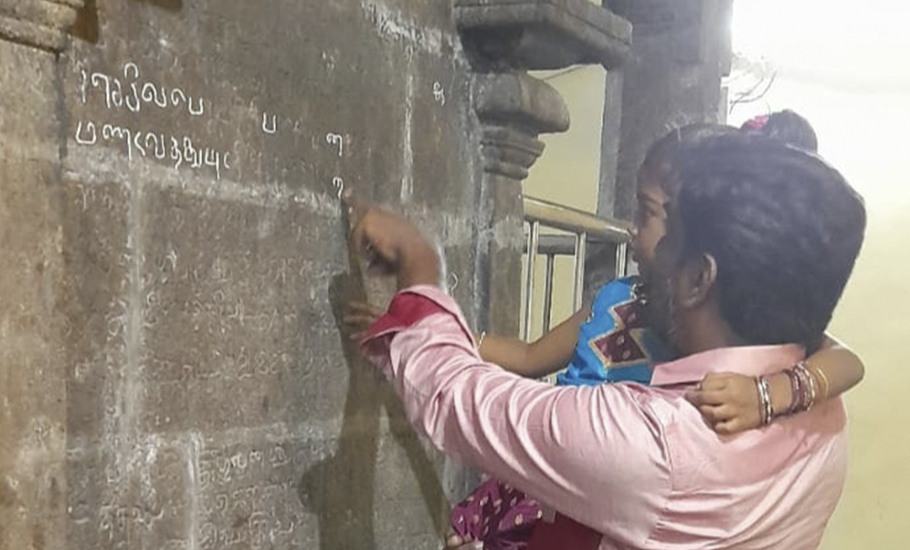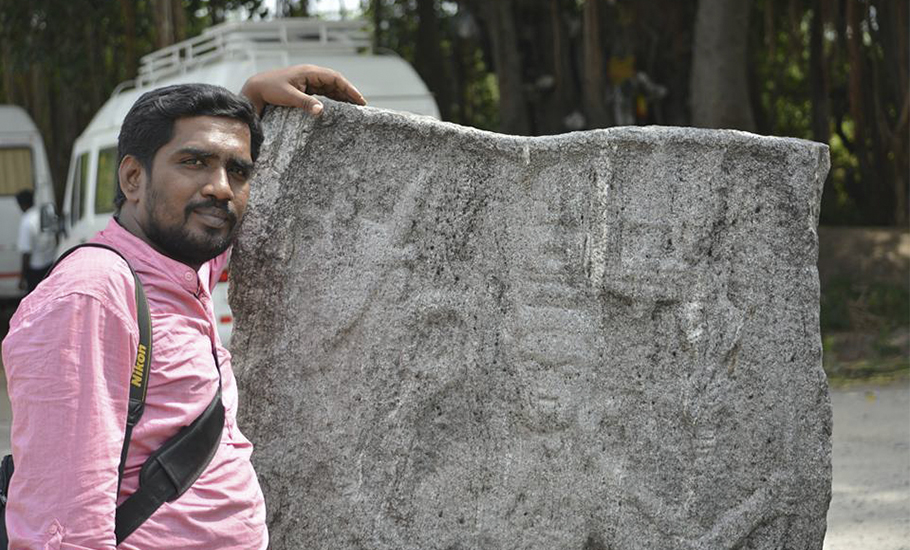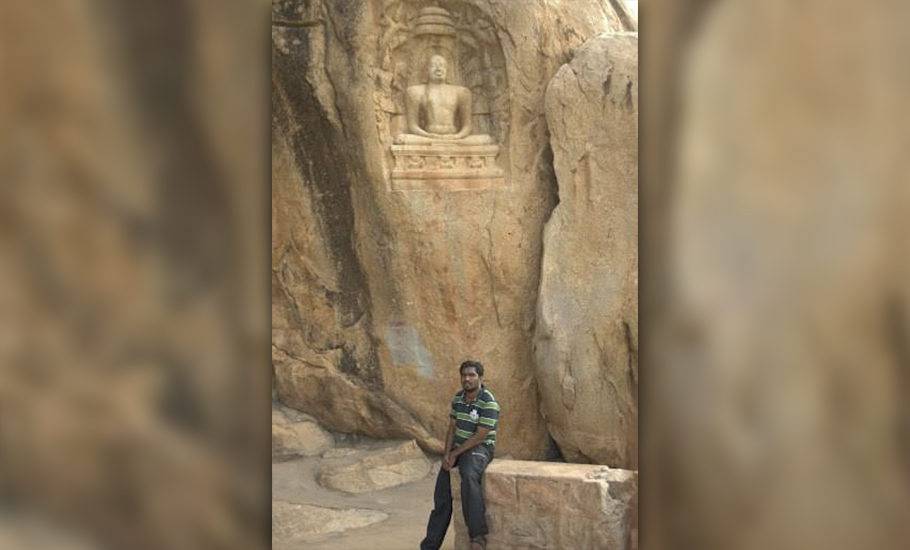
- Home
- India
- World
- Premium
- THE FEDERAL SPECIAL
- Analysis
- States
- Perspective
- Videos
- Sports
- Education
- Entertainment
- Elections
- Features
- Health
- Business
- Series
- Bishnoi's Men
- NEET TANGLE
- Economy Series
- Earth Day
- Kashmir’s Frozen Turbulence
- India@75
- The legend of Ramjanmabhoomi
- Liberalisation@30
- How to tame a dragon
- Celebrating biodiversity
- Farm Matters
- 50 days of solitude
- Bringing Migrants Home
- Budget 2020
- Jharkhand Votes
- The Federal Investigates
- The Federal Impact
- Vanishing Sand
- Gandhi @ 150
- Andhra Today
- Field report
- Operation Gulmarg
- Pandemic @1 Mn in India
- The Federal Year-End
- The Zero Year
- Science
- Brand studio
- Newsletter
- Elections 2024
- Events
- Home
- IndiaIndia
- World
- Analysis
- StatesStates
- PerspectivePerspective
- VideosVideos
- Sports
- Education
- Entertainment
- ElectionsElections
- Features
- Health
- BusinessBusiness
- Premium
- Loading...
Premium - Events

How one man brought a treasure trove of ancient inscriptions into the digital world

In 2010, K Udhayan launched a website to document the ancient temples and monuments of Tamil Nadu. As he went studying the temples and monuments closely he realised there was a whole reservoir of history and knowledge inscribed on the walls and pillars. It struck him that this knowledge could soon be lost if something was not done to protect it. He also thought that the knowledge was...
In 2010, K Udhayan launched a website to document the ancient temples and monuments of Tamil Nadu. As he went studying the temples and monuments closely he realised there was a whole reservoir of history and knowledge inscribed on the walls and pillars. It struck him that this knowledge could soon be lost if something was not done to protect it. He also thought that the knowledge was available only to those who could visit the places where the inscriptions are. There should be a way to take the inscriptions to the people interested in reading, analysing and understanding them.
His focus soon shifted to documenting the ancient inscriptions. Udhayan thought of making an online database of inscriptions so far deciphered and published by the Archaeological Survey of India and the Tamil Nadu State Archaeology Department. Udhayan has been documenting the inscriptions on various sites in Tamil Nadu since then. Recently, he finished the work of the online database (http://udhayam.in/) by adding 6,144 inscriptions found in various parts of Tamil Nadu. The inscriptions have been arranged by place, dynasty, king and period.
Called ‘Udhayam.in’, the online database is unique. Even though the Tamil Nadu State Archaeology Department and the ASI maintain separate online databases of the inscriptions deciphered and published, many need to be updated based on place and chronology. The names of places from where the inscriptions were discovered might have been changed in many cases due to administrative reasons. For example, North Arcot and South Arcot today have changed to Vellore and Tiruvannamalai. Udhayan’s online database is an attempt to find an inscription with all the necessary information associated with it in a click.

Arranging the inscriptions chronologically was challenging, according to Udhayan. “Many new districts and taluks are being formed due to administrative and other reasons. But I found that the names of the places from where the inscription stones unearthed remain unchanged in the records of many inscriptions. Today’s Virudhunagar district was formerly called Karmaveerar Kamarajar district. There was a Chengalpattu-MGR district. I prepared the database in the current context, geographically as well as chronologically,” he said.
Even though Udhayan has been documenting the cultural vignettes of Tamil Nadu through his website since 2009, it was in 2019 that he decided to create a database for the inscriptions discovered across Tamil Nadu. There was a reason for it. He was asked to prepare a database of inscriptions by the state archaeology department which he did with great care. “The project that I did for the Tamil Nadu state archaeology department gave me confidence to do a detailed database for the inscriptions deciphered and published in Tamil Nadu,” he said. When Udhayan told this to his wife Sridevi, she said she would help. His friends Vinodh Rajan, a post-doctoral researcher working on Indic scripts, and Srinivasan also joined.
Inscriptions are the main source for reconstructing the history and culture of ancient civilizations. “It serves as primary documentary evidence to establish legal, socio-cultural, literary, archaeological and historical antiquity on the basis of engravings,” writes TS Sridhar, special commissioner of archaeology, in the forward to Select Inscriptions of Tamil Nadu.
In 1966, a separate epigraphy wing was started in Tamil Nadu. The main function of this wing is to copy inscriptions on boulders, stone pillars, hero stones, temple walls and on copper plates. The inscriptions are deciphered, edited and published. The estampages (ink impressions) of more than 18,000 inscriptions are preserved in this wing. The epigraphy branch of the Archaeological Survey of India (ASI) has copied and deciphered at least 74,000 inscriptions found in different parts of the country so far.
Udhayan and his team tried optical character recognition (OCR), a process that converts an image of text into a machine-readable text format to create the user-friendly database. “The OCR helped us convert printed paper documents into machine-readable text documents. We wanted to edit and update the details associated with each inscription. We read more than 42 books of inscriptions published by the state archaeology department, ASI, and other institutes for preparing this database. It took three years. We have added 6,144 inscriptions found in various parts of Tamil Nadu to our database,” said Udhayan, who is a designer-estimator at a private company in Chennai.
There are four sections in the “Inscription detail” box, namely heading, language, script and inscription. The ‘location’ section has district, taluk and village. The ‘king’ section has dynasty, king, regional year and historical year. The ‘book’ section will have information on the source from where the inscription was taken and with its number and year. A link to the original document is also provided. The ‘Agaramuthali’ section of the database has a dictionary and glossary.
“I have included more than 4,000 words, mostly used in the inscriptions, with meanings. At times, meanings change from place to place. The dictionary will help one to find the right meaning of a word used in the inscription,” said Udhayan. The glossary will take one to the exact inscription or page. Udhayan has included maps and graphics to understand the inscriptions properly. Anyone can access the website because it is designed to help inscription enthusiasts and research students. A timeline beginning from AD 99 to AD 1899 in the database will take you to the year of the inscription with a link to the original file.
Scholars feel that the database will be useful for researchers as well as those who are interested in epigraphy. “It is a very useful beginning. Presently, it is mostly concerned with published sources and texts of Tamil Nadu State Archaeology Department. Udhayan digitalised these available texts of the inscriptions published so far by the department. We can locate inscriptions area-wise, dynasty-wise, period-wise, script-wise and so on. If he can provide pictures of inscriptions, it will be more useful,” said S Rajagopal, a senior epigraphist, who has deciphered many inscriptions in various parts of Tamil Nadu. “Udhayan has used the word index of every volume for his ‘Agaramuthali’ section. His work will induce searchers to know and learn more about Tami history, heritage, language etc. But it depends on how many researchers know and use this site,” he added.

However, some scholars feel that the creators of the database have mostly taken the inscriptions published by the TN State Archaeology Department only and not the inscriptions published by the ASI. “There are plenty of inscriptions published by the ASI which could have been included in the database,” said S Rajavelu, another epigraphist.
Answering the criticism, Udhayan pointed out that building the database is a work is in progress.
Udhayan said the database will be updated every day, by adding more inscriptions to it. “The website is designed to help inscription-enthusiasts and research students. This is just the beginning. We will be updating the database every day,” he said.
